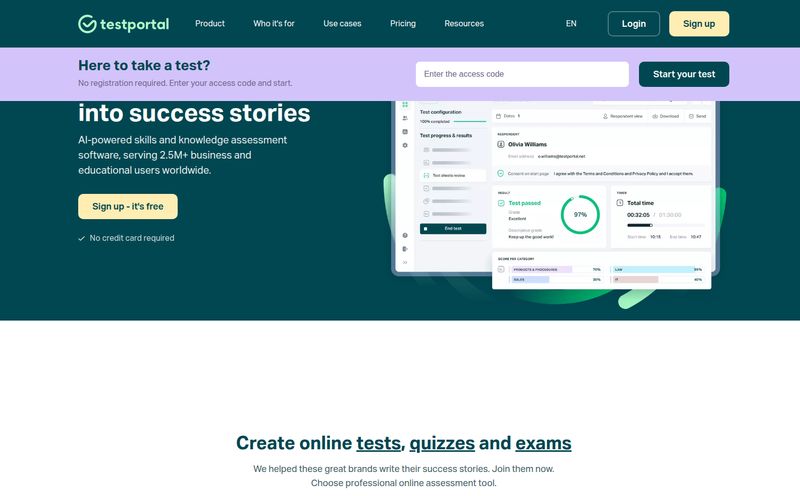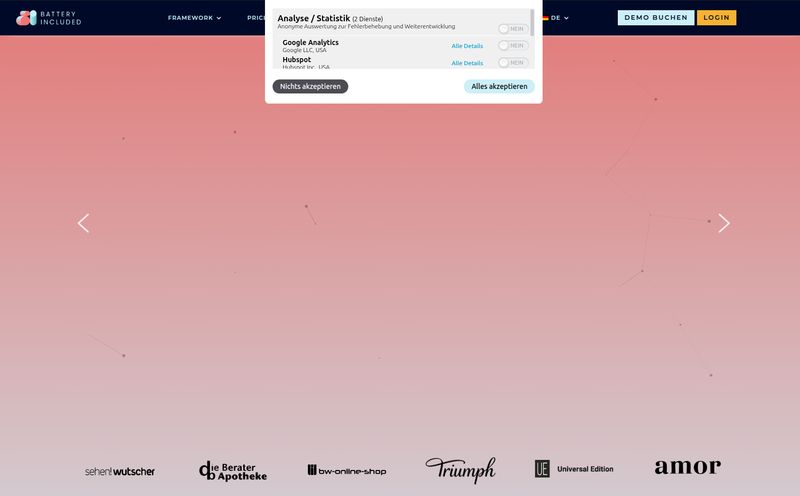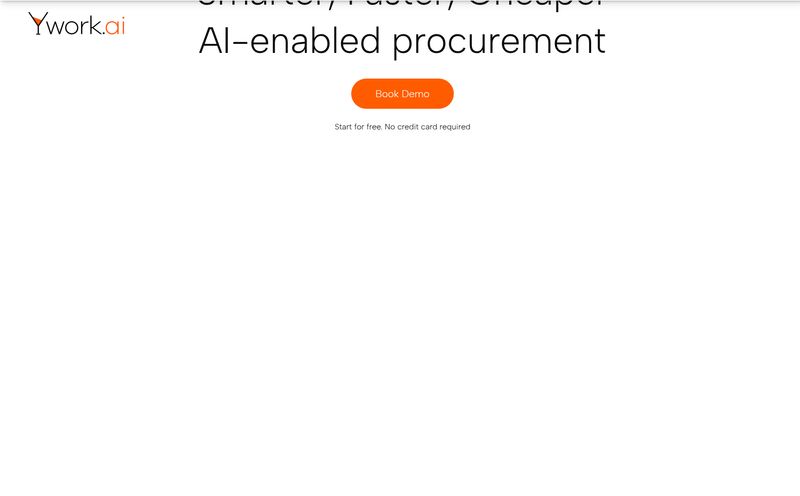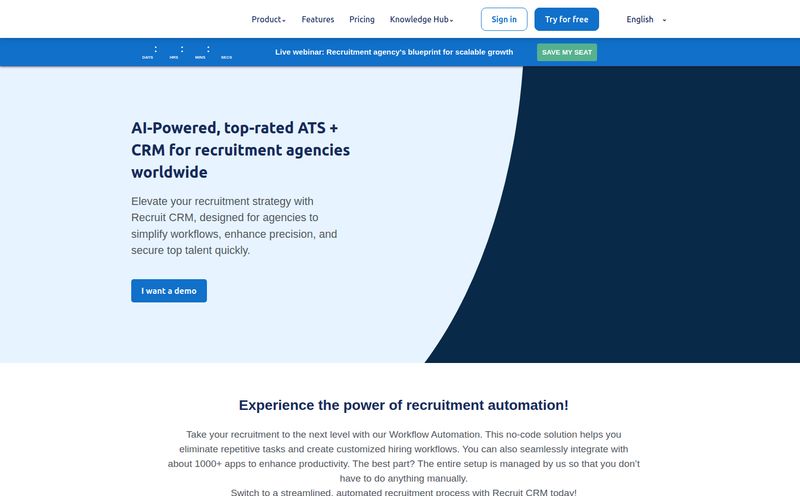If you've ever been in charge of hiring, you know the feeling. It's a mix of hope and impending doom. You post a job, and within hours, your inbox looks like a digital avalanche. Hundreds of resumes. You start sifting, and your eyes glaze over. Everyone's a 'team player' with 'excellent communication skills'. It's the corporate version of swiping through a dating app where everyone uses the same six photos.
I’ve been there. I’ve waded through those digital stacks, my coffee getting cold, wondering if the perfect candidate is buried somewhere on page 73 of my inbox, or if I accidentally deleted their email. It's a time-suck. A massive, soul-crushing time-suck. We're told to work smart, not hard, but traditional hiring often feels like the exact opposite.
So, when a tool like One Way Interview lands on my desk with the tagline "Recruitment 2.0: Make Hiring Smart, Not Hard," my inner skeptic and my exhausted inner hiring manager both lean in a little closer. An AI-powered video interview platform that claims to save up to 70% of hiring time? Okay, you have my attention.
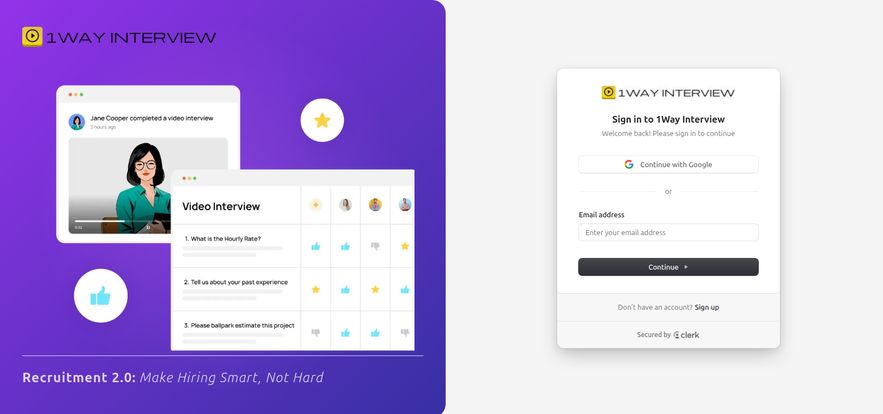
Visit One Way Interview
So What Exactly is One Way Interview?
Let's strip away the marketing jargon. At its core, One Way Interview is an asynchronous video interview tool. That means you send candidates a link with a set of questions, and they record their answers on their own time. No more scheduling nightmares trying to align three different calendars across four time zones. That alone is a pretty big win.
But that's just the table stakes for tools like this these days. Where things get interesting is the AI layer. This isn't just a fancy video recorder. The platform uses artificial intelligence to help you screen and evaluate candidates before you even watch a single second of video. It’s designed to be a filter, separating the serious contenders from the 'spray and pray' applicants. It finds the people who are genuinely invested in the role, not just clicking 'Apply' on everything they see.
The Nitty-Gritty: How It Actually Works
The process is surprisingly straightforward. As a recruiter or hiring manager, you set up an 'interview' in the system. You craft your own custom questions—a mix of text, video, or multiple-choice formats. This is your chance to get creative and ask things that a resume could never tell you.
For example, instead of "Tell me about a time you faced a challenge," you could ask a sales candidate to record a 60-second impromptu pitch for a bizarre product. Or ask a developer to look at a snippet of code and explain how they’d refactor it. You send the unique link to your applicants, and they complete it when they're ready.
The AI Screening 'Copilot'
Once the responses start rolling in, the AI gets to work. It analyzes the language used in the answers, looking for things like a results-driven focus. It's not just listening for keywords; it's trying to understand the intent behind the words. It's like having a very efficient, very fast assistant who does the first pass for you, flagging candidates who seem to have the right mindset and experience based on their responses.
This allows your team to then focus their precious time on the short-listed candidates, reviewing their video answers with more context and confidence. You can see a dashboard with all the candidates, and team members can leave their own ratings (the thumbs up/down and stars you see in the image), which makes collaborative hiring so much easier.
ATS Integration and Branded Experience
One of the things I always look for is how a new tool plays with others. A shiny new platform is useless if it creates another data silo. One Way Interview seems to get this. It offers a simple built-in Applicant Tracking System (ATS) for smaller teams who might not have one, but more importantly, it offers integrations with existing ATS platforms for larger businesses. That's a huge plus. No one wants to manage two separate systems.
Another nice touch? You can brand the candidate-facing side of things. This means when an applicant clicks your link, they see your company logo and colors. It feels professional and cohesive, not like they've been shuttled off to some random third-party site. First impressions matter, and this helps maintain a positive candidate experience from the start.
Let's Talk Money: The Pricing Breakdown
Ah, the part everyone scrolls down for. Pricing can make or break a tool's adoption, and I've got to say, the structure here seems pretty logical and scalable. It’s not one-size-fits-all, which is smart. Here’s a quick rundown of their plans:
| Plan | Price/Month | Key Features |
|---|---|---|
| Starter | $19.99 | Great for a solo recruiter or a very small business. You get 30 interviews a month with a 30-day video retention. |
| SME | $49.99 | Aimed at small to medium enterprises. 60 interviews/month, adds the AI screening validation, and doubles video retention to 60 days. |
| Business | $89.99 | For growing businesses with higher volume. 150 interviews/month, AI screening, and 90-day retention. |
| Unlimited | $299.99 | The enterprise-level plan. Unlimited interviews, all the AI goodies, premium support, ATS integrations, and a 180-day retention period. |
(Note: Always check their official pricing page for the most current details, as these things can change.)
The Good, The Bad, and The AI
No tool is perfect. Let's be honest. It's about finding the right fit for your specific needs. After digging in, here's my take.
What I Genuinely Like
The time-saving aspect is undeniable. Cutting out the initial phone screen phase alone is a game-changer. By having candidates pre-qualify themselves by completing the video interview, you're already selecting for motivation. The AI layer then adds another level of efficiency, turning that mountain of applications into a manageable molehill of top contenders. I also love the flexibility of the built-in vs. integrated ATS. It shows they understand different businesses have different needs.
Where It Might Not Be The Best Fit
Look, this isn't the magic bullet for every single role. If you're hiring a welder, a mechanic, or anyone whose job requires a hands-on demonstration, a video of them talking isn't going to tell you much. This is best suited for roles where communication, personality, and problem-solving skills can be showcased verbally—think sales, marketing, customer support, project management, and even some developer roles.
There's also a learning curve. Your team will need a little training to get the hang of crafting good questions and interpreting the results. And the cost, while scalable, is a factor. It’s based on usage, so if you have a massive hiring push one month, your bill will reflect that. It’s not a flat-fee-and-forget-it kind of service.
Frequently Asked Questions About One Way Interview
- Is One Way Interview just another Applicant Tracking System (ATS)?
- Not quite. While it has some basic ATS functions in its built-in system, its primary power is as a screening and interviewing tool that sits on top of your hiring process. It's designed to integrate with a full-fledged ATS like Greenhouse or Lever for a more powerful, streamlined workflow.
- How fair is AI screening to candidates?
- This is a fantastic and important question in the industry right now. A well-designed AI can actually reduce human bias by focusing on the content and language of an answer rather than on a name, a school, or a resume gap. However, it's crucial that the AI is used as a copilot, not the pilot. It should flag candidates for human review, not make the final decision. The goal is to augment human judgment, not replace it.
- Can I use my own custom questions?
- Absolutely. In fact, that's one of its biggest strengths. The platform is most powerful when you tailor the questions specifically to the role and your company culture. This is your chance to go beyond the generic and really see how a candidate thinks on their feet.
- How difficult is it for candidates to use?
- The candidate experience is designed to be simple. They just need a device with a camera and an internet connection. They get a link, follow the prompts, and record their answers. It's generally much less stressful than a live video call and gives them the flexibility to record when they feel prepared and comfortable.
- What's the main benefit over a regular Zoom interview?
- Efficiency and scale. A 30-minute Zoom call is still 30 minutes of your time. You can send a One Way Interview link to 100 candidates and review the top 10 flagged by the AI in less time than it would take to conduct just 3 or 4 live calls. It eliminates scheduling and lets you focus on the most promising applicants first.
My Final Verdict
So, is One Way Interview the future of hiring? I think it's a significant piece of it. The idea of leveraging technology to handle the most repetitive, time-consuming parts of recruitment just makes sense. It's not about removing the human element; it's about saving that human element for where it matters most—building real connections with genuinely qualified, interested candidates.
If you're a small business owner, a startup, or a hiring manager at a larger company who feels like they're drowning in resumes, this is definitely a tool worth exploring. It’s a smart, modern approach to an age-old problem. It might just be the thing that helps you reclaim your time and find that needle in the haystack, without having to search through the whole entire haystack by hand.
